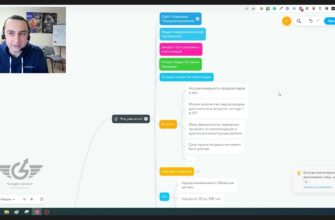Many technical experts and web analysts are currently noting numerous browser restrictions regarding how third-party cookies work. The problem is also relevant for those who use such files to personalize marketing activities and evaluate their effectiveness.
Safari browsers starting from version 13.1, as well as Firefox, do not allow capturing user behavior and analyzing ads. Most likely, similar blocking will soon appear in other browsers.
A new feature in Google Ads – Enhanced Conversions – will help solve the problem and increase the reliability of the collected statistical data. In this article, we will tell you what advanced conversion tracking in Google Ads is – this is how the name of this service is translated.
How many calls and sales will I get by ordering contextual advertising from you?
I need to calculate the conversion of my website Describe
the task
in the application
Calculate potential ad revenue Google
contextual advertising calculator
What is Advanced Conversion Tracking in Google Ads?
Advanced conversion tracking in Google Ads makes it possible to partially supplement statistical information with data lost due to cookie blocking. The tool allows the advertiser to increase the degree of reliability of indicators: it captures information about targeted actions and sends them to the database simultaneously with information about the user – his name, contact information, etc.
After that, the received information is compared with Google accounts, and the relationship between conversions and the user’s reaction to advertising – clicks on the ad and views is established.
Information! This mechanism is designed to increase the credibility of online conversion reports and collect data for smart strategies.
How does Enhanced Conversions work?
The secure SHA256 hashing mechanism used by Google allows you to more accurately record conversions from a web resource:
- At the initial stage, the visitor must perform some targeted action on the site, for example, make a purchase or subscription, register or provide contact information (name, email or postal address, phone number);
- Tracking tags intercept this information, then all information is hashed and transferred to the system database;
- The algorithm correlates the saved information with accounts — this is how the relationship between conversions and advertising events is determined (provided that the visitor was authorized in Google and interacted with the ad).
The implementation of the described protocol improves the quality of reports.
Important! Google takes the protection of personal information very seriously, so only anonymized summary data is displayed in all reports.
How do I set up advanced conversion tracking with GTM?
Setting up advanced conversion tracking in Google Ads is possible using Google Tag Manager. In this case, it is necessary to subject only minor changes to already working tags. For example, let’s use the Element Visibility trigger with a selector for a “Thank You” message that appears after the order has been submitted. The way you set up targets in GTM affects the choice of trigger.
Next, you will need to generate a new tag and configure it – “Transmitting an event to the Google Ads account”. For this purpose, in the left menu of the GTM window, use the “Tags” block and click on “Create”, then in the “Tag Configuration” section, define the type of tag, selecting “Google Ads Conversion Tracking” for this:
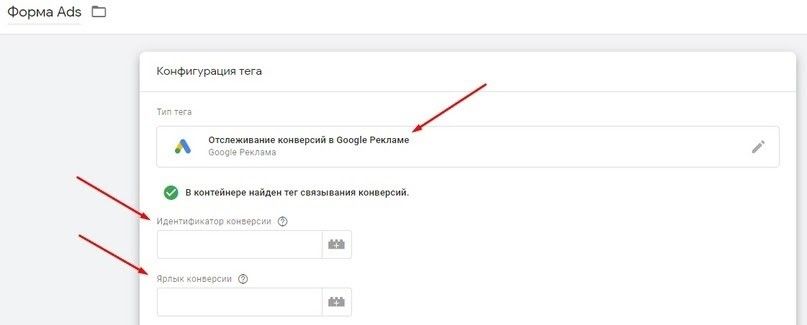
The next step is to set the label and ID. Such data appears in the Google AdWords advertising account in the “Conversions” section during the goal creation process:
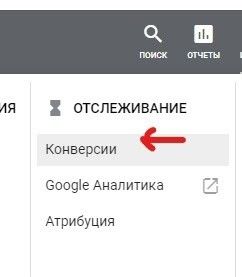
Now you need to define a new action and configure it. For these purposes, we will use the corresponding button in the “Conversions” section of your Google Ads account – it is a white plus on a blue background. Then we click on the “Website” module and fix the data about the goal:

How many calls and sales will I get by ordering contextual advertising from you?
I need to calculate the conversion of my website Describe
the task
in the application
Calculate potential ad revenue Google
contextual advertising calculator
To use GTM, in the corresponding tab you will find a shortcut and a conversion ID, which it is recommended to copy. A little lower, give your consent to manually configure advanced tracking and save the changes:
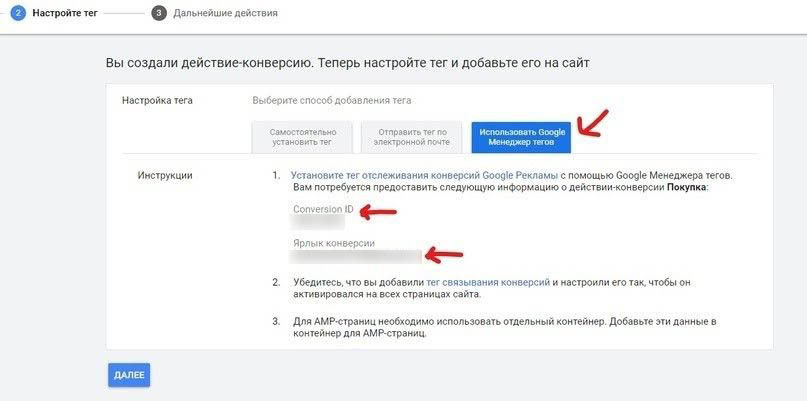
Going back to the GTM tag we created earlier and specifying the ID and tag options. Check the box “Specify advanced conversion tracking data”:

After that, we can set up advanced conversion tracking. To do this, select “Individual fields” from the list in the “Data source” field:
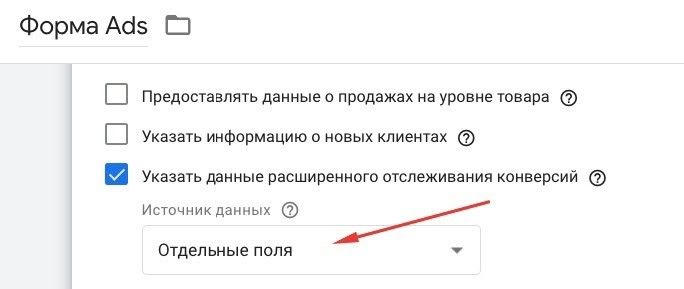
Set “New Variable” in the “Advanced Conversion Tracking Variable” field. At the top of the page, under the heading, a list of information about users will appear that can be used in the tag:

For each customer information field that you want to capture, set the value to a New Variable. We’ll show you how to do this using a phone number as an example:
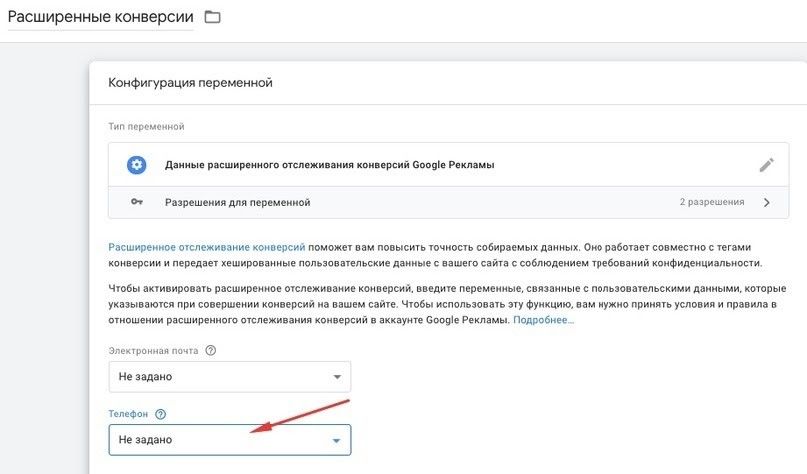
At the bottom of the list, click on “New Variable”. Let’s define the type of the variable as “DOM Element”. This can be done in the “Variable Configuration” window by running the configuration:

Returning to the “Variable Configuration” window, in the “Selection Method” field, you must use the “CSS Selector” item from the drop-down list:

The next field requires a CSS selector that refers to visitor information. For our example, this is the selector for the name and phone number fields in forms on the website. After fixing the specified information, the variable for advanced conversion tracking will take the following form:
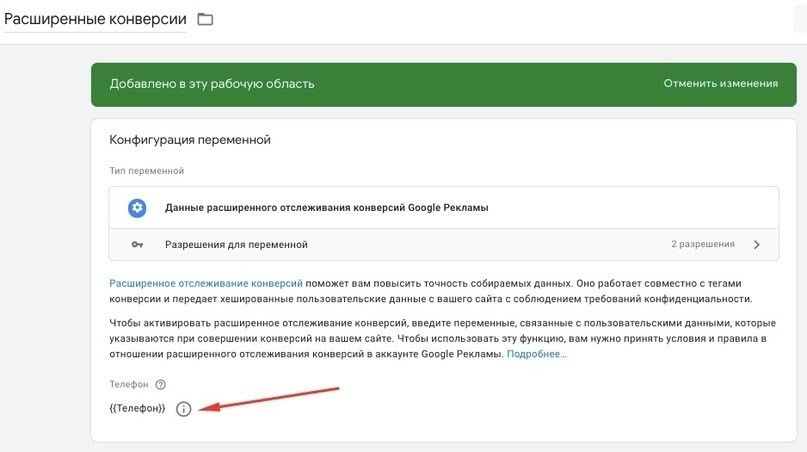
When a cookie block is detected, the tag will trigger the collection and transmission of the specified information to the ad account as a targeted action. This, in turn, will signal the system to turn on smart strategies and allow you to find more complex chains of interaction between visitors and the web resource on different devices.









